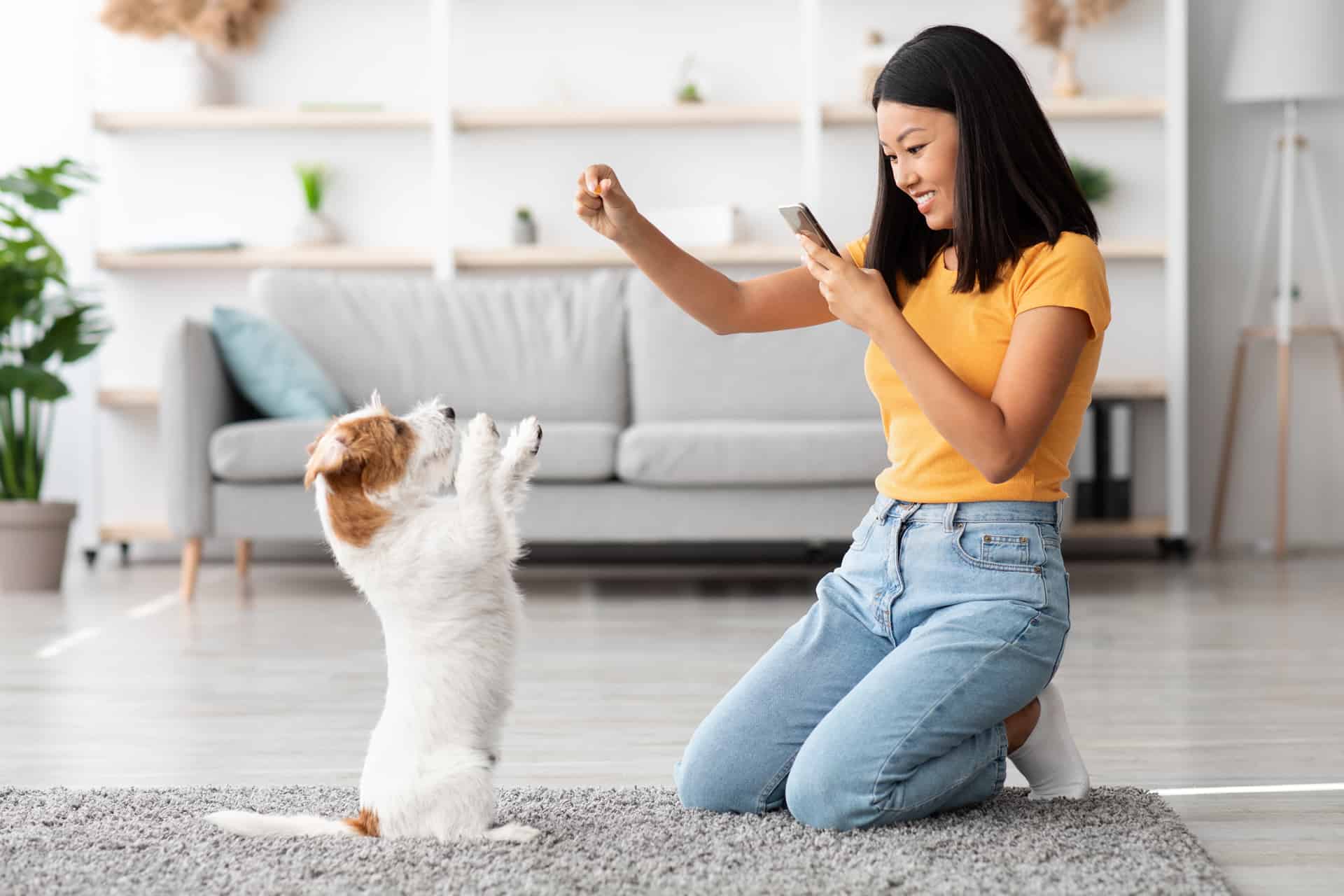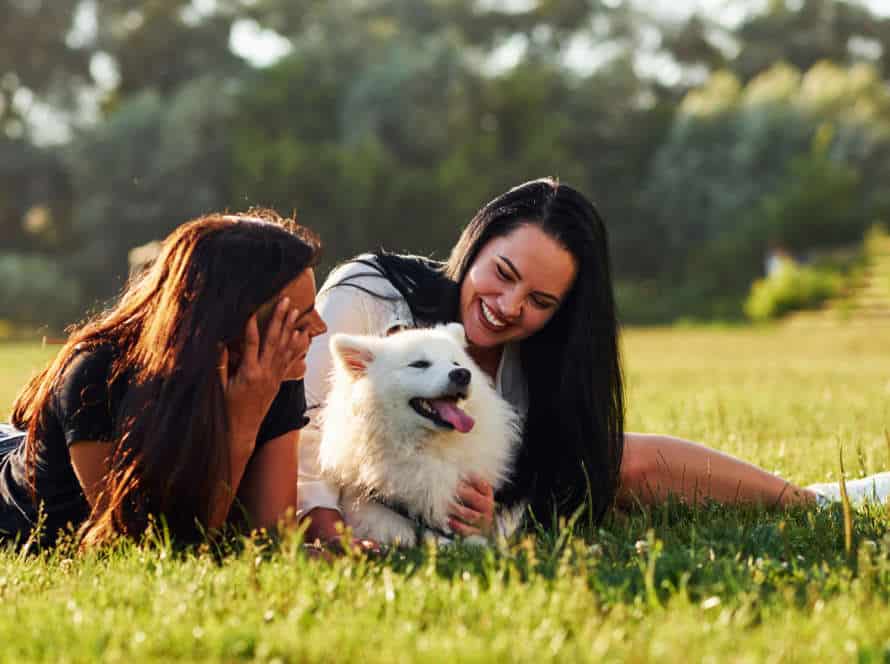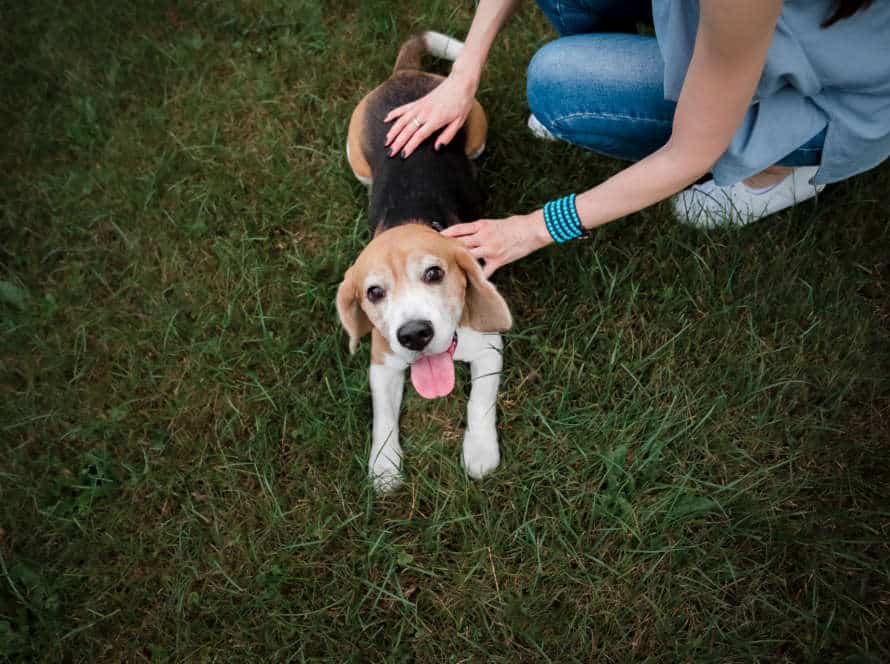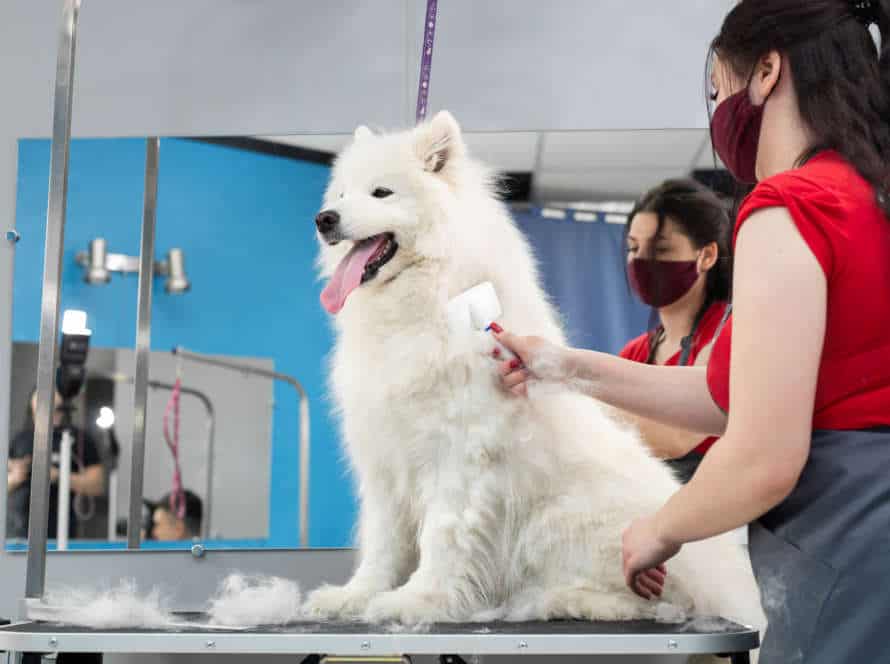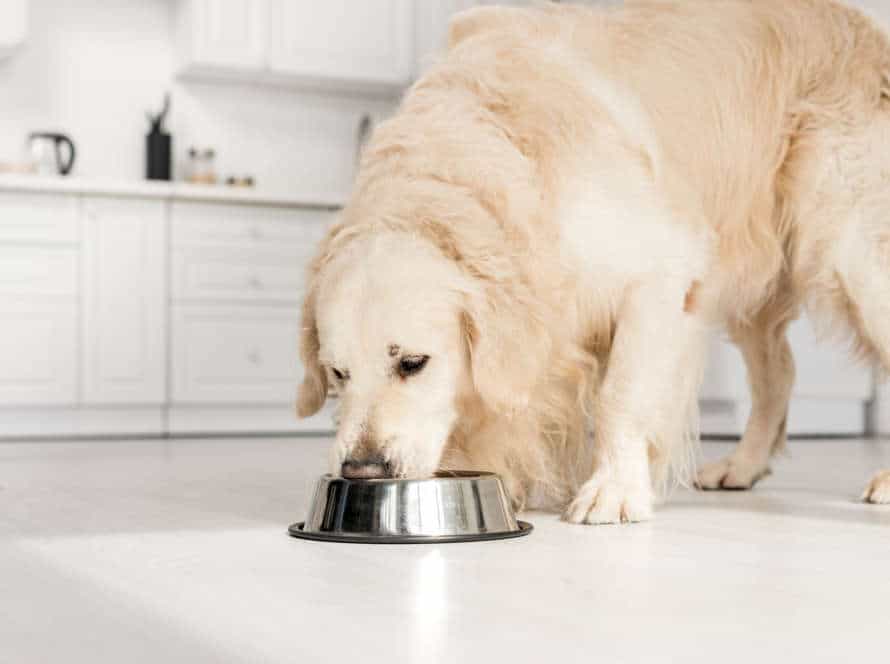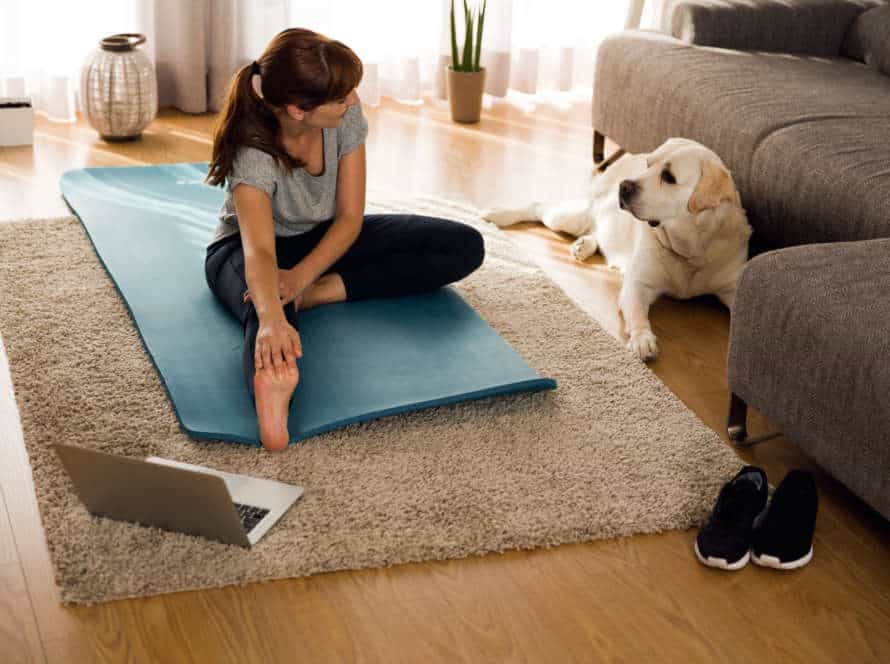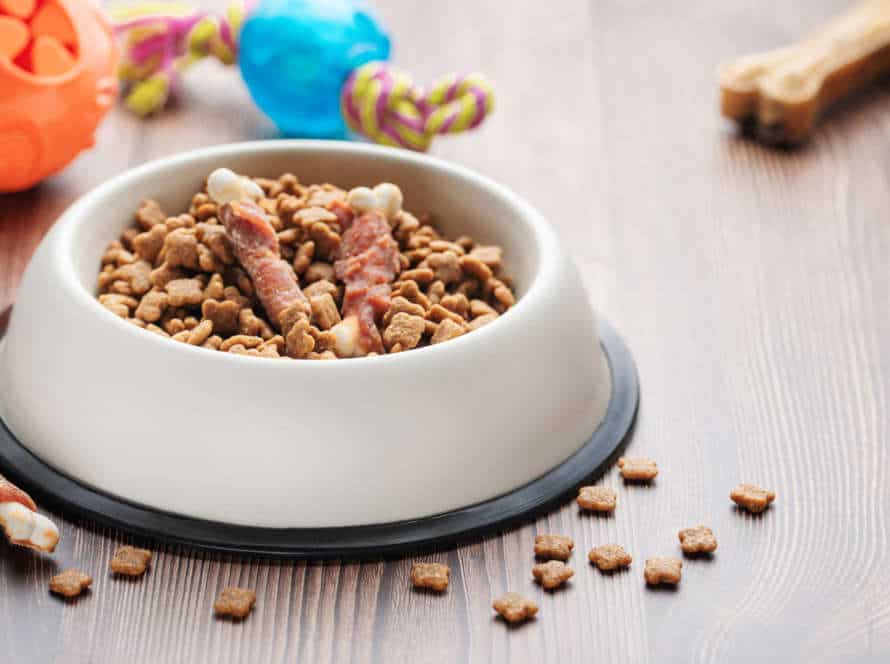Positive Reinforcement for Puppies: Building a Foundation for Good Behavior
Positive reinforcement is an effective way to train puppies. It relies on rewards, not punishment, to promote healthy habits. To get the best results, here are some tips:
- Give treats, toys, or praise as rewards.
- Be consistent with rewards and praise.
- Applaud your pup right away when they do something right.
- Don’t respond to bad behavior – instead, divert their attention to something positive.
- Make sure everyone in the home follows the same approach to keep things consistent.
Plus, positive reinforcement is a great way to build a bond with your pup. Have fun while training them!
Understanding Positive Reinforcement Training
Positive reinforcement training is a way to teach puppies the correct behavior. Rewards such as treats or praise are given for desired behavior. Whereas, undesired behavior is ignored, or consequences are provided when required. To train puppies effectively, and create strong links between pup and trainer, it’s essential to comprehend how positive reinforcement works. Let’s explore more about this type of training.
Definition of Positive Reinforcement Training
Positive reinforcement training is a popular way to train dogs. It rewards desirable behaviors, so they happen more often. Rewards could be treats, praise, or toys. This method helps to build a strong bond between the dog and their owner. It can also teach obedience commands and address behavioral issues. Even service dogs can be trained this way.
For puppies, positive reinforcement training is important. It sets up good behavior and socialization. Good behavior should be rewarded with treats, love, and playtime. This will encourage good behavior and build the puppy’s confidence, while strengthening their bond with the owner.
Importance of Positive Reinforcement
Positive reinforcement is an effective training technique. It encourages puppies to behave well by rewarding them with treats, toys or verbal praise.
Benefits of positive reinforcement training:
- Builds trust – Rewarding good behaviour creates a strong bond between pup and owner. They learn to trust their owner’s commands and look forward to the rewards.
- Encourages good behaviour – Treats act as an incentive for pups to act correctly. Over time, they learn to repeat their good behaviour to get more praise.
- Reduces fear and anxiety – Traditional training methods that use punishment and fear can make puppies anxious. Positive reinforcement creates a calm atmosphere by rewarding good conduct and strengthening the relationship.
- Improves learning – Positive reinforcement is quicker for puppies to learn new commands and behaviours.
Pro tip – Consistency is important for positive reinforcement training. Maintain a routine, keep sessions short and use high-value treats to motivate your pup.
The Science behind Positive Reinforcement
Positive reinforcement is a scientific method to encourage proper behavior and create strong connections between animals and their owners. This technique rewards desirable actions by giving treats or verbal compliments. This reinforces that behavior and makes it more likely to happen again. Positive reinforcement training stresses on rewarding good behavior rather than punishing bad behavior. This aids in forming trust and assurance between animals and their owners and makes learning pleasant and stress-free.
For puppies, positive reinforcement is essential for constructing a robust base for good conduct. As they age and learn, puppies are more likely to act rightif they are rewarded for it. It also helps them understand the difference between right and wrong and spurs them to keep learning and exploring.
Pro tip – Be consistent with rewards and maintain a positive and entertaining learning atmosphere, which can make a huge difference in your puppy’s attitude.
Creating a Positive Environment for Your Puppy
Positive reinforcement is a great way to motivate your puppy to do the right things and not the naughty ones. With the right training, you can create a fun atmosphere for your pup and help him learn good habits with reinforcement. Let’s go over the basics of positive reinforcement and how to make a fun environment for your pup.
Importance of a Positive Environment
Having a positive atmosphere is essential for a pup’s growth and maturation. It affects their doings and character when mature. Why is it so important?
- It creates a strong base of fondness, trust, and respect between pet and owner. This encourages good manners and education.
- A nice environment provides a safe and sure place for the pup to grow and investigate. This bolsters assurance and self-reliance.
- Positive reinforcement techniques, like treats, compliments, and play-time, are better than punishment-based teaching procedures in forming good conduct for pups.
- A positive environment can reduce tension and fears in pups, meaning they will likely be healthier and cheerier in the long run.
Creating a positive atmosphere for your pup is essential for their wellbeing and helps to set up the basis for good behavior in the future.
Building Trust and Bonding with Your Puppy
Creating a secure & loving atmosphere for your pup is critical. Positive reinforcement is the best way to bond and train them. Here are some guidelines:
- Reward your pup with treats, toys, or praise for good behaviour.
- Devote quality time by playing, petting, or cuddling with them.
- Make & stick to a routine for meals, exercise & sleep.
- Be patient & consistent with training, making gentle corrections when needed.
By building trust & bonding with your pup, you’ll have a lifetime of friendship. Pro tip: Doing regular training will help them learn faster & make your bond stronger.
Creating a Safe and Comfortable Space for Your Puppy
Creating a cozy and secure space for your puppy is very important for their health and happiness. Plus, it helps them learn to behave correctly from the start. Positive reinforcement is an excellent way to set them up for good manners. Here are some tips for making a positive environment for your pup:
- Give them a spot to rest and sleep, like a crate or bed.
- Set up an enclosed space or use a leash to show them where they can play and be active outside.
- Use treats and praise to reward them for being well behaved.
- Instead of punishing them when they act badly, try shifting their attention to a different activity.
- Give them plenty of toys and chew items to keep them busy and avoid any destruction.
Making a happy place for your pup will lead to success and help them learn good behavior as they get older.
Positive Reinforcement Techniques for Obedience Training
Positive reinforcement is key when training puppies. It’s a great way to teach them new behaviours and change old ones. Plus, it helps strengthen the bond between you and your pup! In this article, we’ll explore the positive reinforcement techniques used to train puppies.
Clicker Training
Clicker training is a positive reinforcement technique. It uses a clicker to mark a desired behavior, then rewards it. Here are some tips to use clicker training with puppies:
- Pick a quiet environment with no distractions.
- Grab your pup’s attention and start with easy commands like “sit” or “come”.
- When they obey, use the clicker then give a treat or praise.
- Be persistent and patient – it takes time for them to learn.
- As they get better, make the commands more complex.
Clicker training is great for connecting with your pup and building trust!
Treat-Based Training
Treat-based training is a fabulous way to reward your pooch for good behavior! Especially for puppies, it’s a great foundation for obedience. Here are some tips:
- Choose yummy, soft treats your pup loves.
- Reward desired behaviors like sitting, staying and coming when called.
- Be steady with rewards and use a cue word like “good” or “yes”.
- Decrease treats over time as pup obeys more.
- Don’t use treats to punish or correct – this will confuse pup and damage your relationship.
- Pro tip: Make training sessions short and fun; always end on a positive note!
Verbal and Physical Praise
Verbal and physical praise are great tools for positive reinforcement when training puppies.
Use a consistent, enthusiastic tone when praising the pup for good behavior, like sitting, staying or coming when called. Plus, use their name during praise!
Touch and affection are also important rewards for positive behavior. Pet your pup’s head or give them a belly rub when they obey commands. This strengthens your bond with them.
Be patient, reward them every time they obey correctly, and be consistent with your praise. With time, obeying commands will come naturally to them.
Positive Reinforcement Techniques for Socialization
Train your pup with positivity! Establish that they are safe and comfortable. With positive reinforcement, you can build a strong bond and create a calm environment. This section talks about the techniques used to socialize your pup with positivity!
Introducing Your Puppy to New Environments
Introducing your puppy to unfamiliar surroundings can be daunting for both pup and owner. Utilizing positive reinforcement methods during socialization can set the foundation for good behaviour and make the process less stressful. Here’s some advice to assist you:
- Begin slow: Introduce your pup to new places gradually; start with tranquil, low-stress areas like your garden or a serene park.
- Reward with positivity: Give treats, compliments and toys when your pup shows decent behaviour in new environments.
- Have patience: Every puppy is unique and will take varying amounts of time to adjust. Go at your pup’s speed and avoid overwhelming them with too many novel experiences all at once.
Pro tip: Perseverance and patience, accompanied by steady positive reinforcement can help your pup become confident and demonstrate good behaviour in any situation.
Introducing Your Puppy to New People and Animals
Introducing a pup to new folks and animals can be intimidating. But, using positive reinforcement can make it an enjoyable time for you and your furry buddy. Try these tips for positive reinforcement socialization:
- To start, introduce your pup to new people in a neutral spot with distractions, like a park or pet store.
- Use treats and praise to reward calm behavior and discourage jumping or nipping.
- Gradually raise the level of distractions. Introduce your pup to people and animals of different ages, breeds, and sizes.
- Use positive reinforcement to keep your pup calm, like directing their attention to toys or treats.
- Be patient and consistent. Avoid forcing your pup into overwhelming situations.
Socialization is vital in forming good behavior and a content, well-adjusted pup.
Reinforcing Good Behavior in Social Settings
Positive reinforcement is a great way to teach pups good behavior in social settings. Here are some tips for reinforcing good behavior:
- Treats: Give treats when your pup does something good, so they’ll repeat it.
- Toys: Use toys as rewards for good behavior, and play with them when they’re well-behaved.
- Positive Voice: Talk to your pup in a positive, comforting tone when they behave.
- Consistency: Be consistent in reinforcing good behavior. This will help your pup understand what’s expected and make it easier for them to do it again.
By using positive reinforcement techniques, you can help your pup build the foundation for good behavior, giving them a head start in life.
Troubleshooting Common Behavioral Issues with Positive Reinforcement
Positive reinforcement is a great way to change negative doggy behavior. To do this, you must start with a strong base. Knowing the typical behavioral problems puppies have, and the positive reinforcement strategies to deal with them, is key. Establishing this foundation is necessary for successful puppy training.
Biting and Chewing
Biting and chewing are common issues in puppies. This can cause frustration and damage to belongings. Positive reinforcement is a great technique to handle these behaviors. Here are some tips:
- Provide chew toys and treats to keep your puppy occupied.
- When your pup chews something they shouldn’t, give them something else to chew and reward them.
- If your pup nips or bites, distract them with something to chew and reward them.
- Be consistent, patient and reinforce good behaviors while redirecting bad ones.
Pro Tip- Always praise your pup for good behavior. Positive reinforcement is all about rewarding the behavior you want to see.
Excessive Barking
Are your pup’s barks too much? Positive reinforcement may be the answer! Here are some tips:
- Figure out why they bark (e.g., boredom, fear, anxiety) and address it.
- Teach them to link quietness with treats or praise. Reward them for being silent.
- Don’t reinforce excessive barking – ignore it or remove them from the situation.
- Have a routine of exercise, play, and training to avoid boredom and anxiety.
- With patience, consistency, and positive reinforcement, you can train your pup’s barking. If it doesn’t work, seek help from a professional.
House Training
Training your pup can be tough. But using positive reinforcement will give you a good base for good behavior.
Common issues during house training are:
- Messing indoors
- Peeing/pooping in wrong places
- Going to the bathroom in crate
- Marking territory
To tackle these, you need to have a regular routine for your pup. Feed them at same times and give them chances to go outside.
Positive reinforcement is essential. Reward your pup with treats, love, and compliments when they do the right thing. Like when they go to the toilet outside or use the crate properly. Don’t punish them, as this can be confusing and won’t help them understand what is okay.
House training takes patience and consistency. But with positive reinforcement, your pup can learn good habits that will last a lifetime.
Progression and Next Steps
Positive reinforcement rocks for shaping your puppy’s behavior. Start with ‘sit’ and then move onto others like ‘stay’. Don’t rush. Let your pup get each command before going to the next. This article explains how to go through these steps plus how to understand your pup’s reactions.
Moving Beyond Basic Obedience and Socialization
Basic obedience and socialization are crucial for pups, but it’s just as important to go beyond these basics and work towards positive reinforcement training for long-term good behavior.
Here are the next steps to think about when setting up a basis of good behavior with positive reinforcement:
- Put emphasis on forming a trusting relationship with your pup through positive reinforcement training methods, like clicker training and forming behaviors.
- Throw in mental stimulation activities, like puzzle toys, scent work, and obedience games, to boost cognitive development and stop boredom.
- Teach your pup alternative behaviors or commands for situations that may lead to bad behavior, instead of punishing or scolding them.
- Aim to construct impulse control and self-discipline through training exercises, such as waiting at the door or leaving treats alone.
By progressing past basic obedience and socialization, owners can create a solid foundation of positive reinforcement training that will help their pups for years ahead.
Continuing to Reinforce Good Behaviors
Positive reinforcement is essential for developing good habits in puppies. To help their progress, here are some tips:
- Instantly reward good behavior. Give praise or a treat when they sit or lie down. This helps them link the action to a positive result.
- Stay consistent. Every family member should reinforce good behavior the same way.
- Increase difficulty level gradually. When your pup has mastered a task, make it harder.
Plus, positive reinforcement isn’t just for pups! Research shows it can improve learning and motivation in humans too. It’s a powerful tool for behavior shaping.
Building a Strong Relationship with Your Puppy.
Creating a strong connection with your pup is a must for a soothing home environment where they feel safe, loved and engaged. Positive reinforcement is the best way to make this happen and help with positive habits. Here are some tips:
- Reward good behaviour, like sitting, standing or going outside to pee, with treats.
- Start training when your pup is alert and rested, not tired or hungry.
- Make the session fun with toys and games, and give lots of praise.
- Be consistent with the same commands and rewards, and stick to a schedule.
- Remember that it takes time to build trust, so cuddle, walk and play with your furry friend often.
Frequently Asked Questions
Q: What is positive reinforcement training?
A: Positive reinforcement training involves rewarding a puppy for good behavior, rather than punishing for bad behavior.
Q: How does positive reinforcement affect my puppy’s behavior?
A: Positive reinforcement is a powerful tool in shaping your puppy’s behavior, leading to improved obedience and better relationships with their owners.
Q: What are some good examples of positive reinforcement?
A: Some examples of positive reinforcement include offering treats or praise for good behavior, playing with your puppy, or offering toys as rewards.
Q: Can positive reinforcement help stop bad behavior?
A: Yes, positive reinforcement can help redirect bad behavior by rewarding good behavior instead. This can help puppies learn what is expected of them and what behaviors are acceptable.
Q: How long will it take to see changes in my puppy’s behavior with positive reinforcement?
A: Results will vary depending on the individual puppy and their behavior, but with consistent positive reinforcement, changes in behavior can often be seen in just a few weeks.
Q: Can positive reinforcement be used with all breeds of puppies?
A: Yes, positive reinforcement can be used with all breeds of puppies, as it is a gentle and effective training method that focuses on rewarding good behavior.

